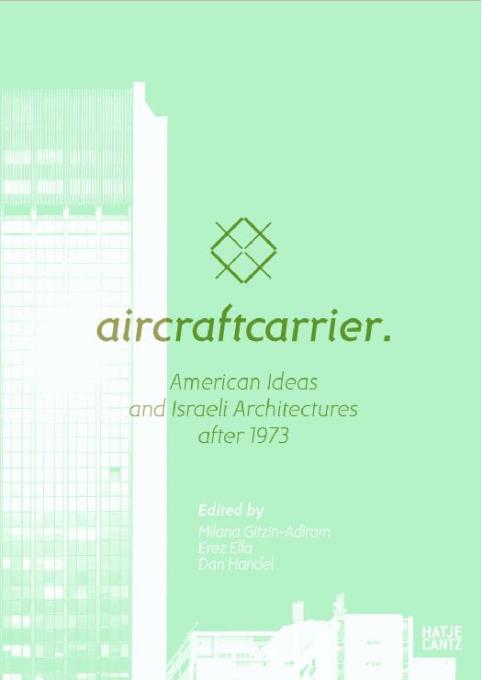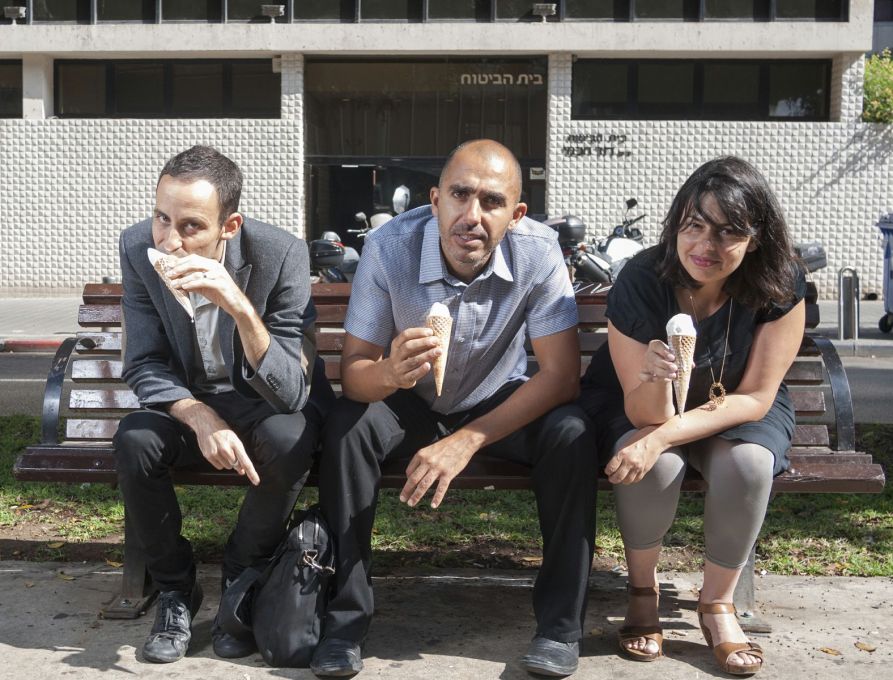The Venice Architecture Biennale exhibition Aircraftcarrier – American Ideas and Israeli Architecture after 1973 and the accompanying book explore the connections between Israel’s fraught political position and the country’s adoption of capitalistic systems. The curatorial team used the 1973 energy crisis and the massive financial crisis in 2008 to bracket Israel’s transformation. Dan Handel, one of the three curators/editors (along with Erez Ella and Milana Gitzin Adiram), spoke about how the Aircraftcarrier explores the way in which social, economic, and political forces have wrought change in Israel’s built environment.
The pavilion and publication draw together a complex set of relationships between the development of capitalism in Israel as both an instrument and consequence of political forces. Do you feel like visitors to the pavilion can access this complexity? What do you hope they will glean from visiting?
One of the central challenges in curating this exhibition, especially in the context of the biennale, was to create something that could communicate on different levels to different people: from the person who spends two minutes in the pavilion and knows nothing about the differences between, say, Israel and Egypt, to the opinionated, thorough architecture critic who will read every word. Therefore we designed the exhibition to work simultaneously as a consumerist experience, as an art show, and as a critical section of Israeli architecture. While some of the complexity of our subject may be lost on some people, we thought this is perfectly fine, as long as they had some fun of course.
The book expands considerably on the content of the pavilion. How did you select content for the book, considering the tight dramaturgy of the pavilion?
There are many links between the two, the main one being the conceptual categorization that we used to classify architectural phenomena structures both the book and the show. However, they are also meant to work independently. In editing the book, we wanted to highlight some aspects of our research such as interviews and archival materials we collected. The other important point was to give much more space to the American perspective, so it’s not just the story of Israeli architecture but something bigger about the systemic crises of capitalism.
The financial crisis of the past few years has coincided with a time of intense political upheaval in the Middle East and northern Africa. Could you project some of the consequences this will have in the built environment of Israel, if we understand architecture as having the potential to be a serious agent?
With the current dynamic of the region, there's no telling where things will go. However, I do believe architecture can take an active part in the shaping of the social and political spheres. In the last four decades, Israeli architecture copied almost everything, and not always successfully. But now we are at the point where we can discuss the mechanisms behind the formation of Israeli space. These mechanisms became so degenerated that today the system is destroying itself. This moment of weakness is the loophole through which architects can act as dormant agents in the heart of capitalist development, and work to change it from within. On the way, maybe we will even have better architecture.
The pavilion in Venice has a gift shop that features "souvenirs" from the social, political, and economic points that were defining moments in Israel’s development as part of the capitalist system, including an empty oil-drum-cum-pencil-holder and a gold ring shaped like Israel in aircraft carrier form.
The concept store idea relates to the onslaught of consumerism in Israeli society that happened with the aid of American influences. However, it also allows people to experience the show in different ways – some may simply buy objects they like, and others will go upstairs to more fully grasp the socio-political processes these objects represent. The pencil (or toothbrush) holder with the oil drip relates to the 1973 oil crisis that followed the war and marked both a new American awareness of the scarcity of natural resources and a new stage in the struggle between superpowers, in which Israel was to become a key asset (the aircraft carrier). As for the ring, it's just an object of desire literally connoting the aircraft carrier, but in a somewhat ironic way.
The historical embrace of commercialization is clear. How has this concept been received in the first week? Are people literally buying in?
Sales are good! But on a more fundamental level, I think the store objects worked better than expected in communicating different things to different people. For some, they were nostalgic memorabilia of a better moment in time, while for others the items were understood as a critical or even cynical statement. We do not prefer or reject any of these perspectives – keeping the meaning open-ended is a crucial element of this exhibition.
Thank you for your time!
Aircraft Carrier - American Ideas and Israeli Architectures after 1973
Edited by Erez Ella, Milana Gitzin-Adiram, Dan Handel, texts by Or Aleksandrowicz, Edo Amin, Tamar Berger, Justin Fowler, Milton Friedman, Eeva-Liisa Pelkonen, visual works by Assaf Evron, Fernando Guerra, Florian Holzherr, Nira Pereg, Post Typography, Jan Tichy
English
Hatje Cantz 2012. 176 pp., 127 ills.
ISBN 978-3-7757-3468-4






